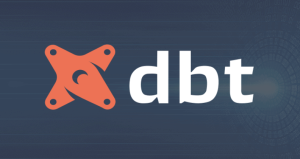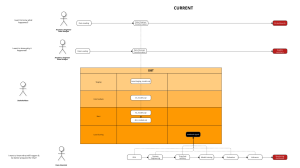Banks are more sophisticated than ever, using the best technology. Here’s how they’re using AI to make your life easier.
You may have seen Pepper the robot in the news. She has been introduced as HSBC Bank’s in-branch greeter and banking assistant. She currently provides bank patrons with information and entertainment, but as her technology improves, she will provide more personalization through features like facial recognition.
While the average person may not be greeted at the bank by an actual robot, we see artificial intelligence being used regularly in our day-to-day banking world.
Artificial Intelligence and Machine Learning
Artificial intelligence (AI) refers to the ability of machines to independently perform tasks normally done by humans, more specifically, things like understanding language, making decisions, or solving problems.
Machine learning (ML) refers to systems that can not only do the tasks but learn from experience. In banking, computer systems are fed a great amount of data about customers. Computers can sort, classify, and analyze that data. They can make predictions based on customers’ previous behavior and make decisions based on previously determined criteria. Systems can also learn from exceptions and improve over time.
Where Is AI Being Used?
Artificial intelligence and machine learning have been used in banking, to some extent, for many years. Over the last several years, as customers rely more on mobile banking and online services, brick and mortar banks have reduced their number of locations.
In 2020, with the onset of the pandemic, many local bank branches closed for extended periods of time. Thankfully, we were still able to complete many of our daily banking tasks. According to Statista, there are 57 million people in the U.S. alone using mobile banking.
Here are some everyday banking services where you might see AI and ML at work:
- Telephone banking: When you call your bank, you’ll need to verify your identity. AI is at work there, matching PINs or using voice recognition for authentication.
- Websites and mobile banking: Most banks allow you to manage your accounts, complete everyday apps online, and offer mobile apps to access accounts on the go, make bill payments, send money, and more. AI is connecting and managing all the interactions between services and keeping your transactions secure in the process.Some British banks allow customers wishing to open an account to send a selfie to validate their identity. This means you can open an account in minutes without visiting a branch or waiting days for manual verification.
- Chatbots: When you visit your bank online or open your mobile app, you might be greeted by an AI-powered chatbot, who can help you locate information or services. Conversational banking allows you to ask questions and get answers in real-time. Your interactions are stored so the bots can give you more personalized services each time you connect, and recommend products for you, based on your behavior and the services you already use.
- Budgeting: If you’re using online budget software like YNAB or EveryDollar, you’ll see AI in the way these systems interact with your banking transactions, automatically move funds into designated categories, and make future projections about your financial situation.
- Integration with digital assistants: In some countries, you can ask Google or Alexa, in plain language, to do simple transactions such as check your accounts or pay a bill.
- Retail payments: Instead of using credit or debit cards to pay for purchases, many people use their mobile devices for contactless shopping. Services like Apple Pay and Google Pay allow users to make payments securely, with mobile devices, using biometric face or fingerprint scanning technology.
- Lending: AI processes at your favorite lending institutions means you can apply for credit cards, loans, and even mortgages. Whether AI is involved at certain stages or during the whole process will depend on the bank. But it can mean faster and more accurate decision making and more security for you and the lender.
- Investments: With the ability to handle huge amounts of data, AI is transforming investment banking too. Systems can keep up with industry changes and make better predictions over time. Investors can even make voice-activated trades on their morning commute.
Behind the Scenes
No matter which banking activities you are using, you can be sure there is some aspect of artificial intelligence involved. That number is set to increase exponentially over the next several years.
Through automated processes, banks collect, sort, categorize, and analyze huge amounts of data to target customers through marketing, better personalize their services, and offer you the best products for your needs.
Considering automatic transactions are less expensive than in-branch activities, AI processes help banks to reduce their costs.
At the same time, AI and ML are helping banks monitor data for unusual transactions, to detect and prevent fraudulent activity, and to keep your accounts secure.
What’s in It for you?
You get 24/7 convenience to bank on your own terms, personalized service based on your previous behavior or that of people similar to you, and faster service overall.
You might think people would be leery about giving up their privacy for the sake of convenience, but according to Genpact, 68 percent of millennials and over 42 percent of older generations are okay with businesses using their personal data if it means they will get better customer service.
Concerns with AI in the Banking Industry
Privacy Risks
Whenever organizations collect a large amount of data, there is a possible security risk. Personal information is always open to hackers, but banks and FinTech companies spend huge amounts of time and money to predict, analyze, and prepare to mitigate those risks. Data is encrypted, verification processes are becoming more complex, and security and fraud detection are very high priorities.
Job Loss
As in any industry, people question whether automation in the banking industry will eliminate jobs. This may be a valid concern as many banks have reduced their brick and mortar location as online and mobile options have increased. That said, automation means that banks can offer more services so new jobs may appear in different areas. Leaders in the banking industry claim they are investing in technology, not to eliminate the human experience, but to make it better.
AI in the Banking Industry Is Here to Stay
While some banks are moving forward with artificial intelligence and machine learning at a faster pace than others, the consensus is AI in the banking industry is here to stay. As technology improves, banks will continue to provide faster, more convenient, more personalized services for you while benefiting from better marketing, reduced costs, and time savings themselves.
Written by SHARI TALBOT
- Joon Solutions Achieves the Data Analytics Partner Specialization in Google Cloud Partner Advantage Program - May 27, 2022
- Top 5 Digital Transformation Trends in 2021 and Beyond - September 21, 2021
- 6 Biggest Data Strategy Mistakes Every Company Must Avoid - September 13, 2021



